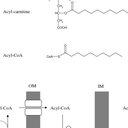Analysis of Flavonoids in Rhamnus davurica and Its Antiproliferative Activities.
Mots clés
Abstrait
Rhamnus davurica Pall. (R. davurica) has been used as a traditional medicinal herb for many years in China and abroad. It has been well documented as a rich source of flavonoids with diversified structures, which in turn results in far-ranging biological activities, such as anti-inflammation, anticancer, antibacterial and antioxidant activities. In order to further correlate their anticancer potentials with the phytochemical components, the fingerprint profile of R. davurica herb from Dongbei was firstly investigated using HPLC-ESI-MS/MS. Thirty two peaks were detected and identified, 14 of which were found in R. davurica for the first time in this work. Furthermore, a total of 23 peaks were resolved as flavonoids, which are the major components found in R. davurica. Meanwhile, the antiproliferative activities against human cancer cells of HT-29 and SGC-7901 in vitro exhibited distinct inhibitory effects with IC50 values at 24.96 ± 0.74 and 89.53 ± 4.11 μg/mL, respectively. Finally, the general toxicity against L-O2 cells displayed a much higher IC50 at 229.19 ± 8.52 μg/mL, which suggested very low or no toxicity on hepatic cell viability. The current study revealed for the first time the correlations between the flavonoids of R. davurica with their antiproliferative activities, which indicated that the fingerprint profile of flavonoids and their anticancer activities could provide valuable information on the quality control for herbal medicines and their derived natural remedies from this valuable medicinal plant.


